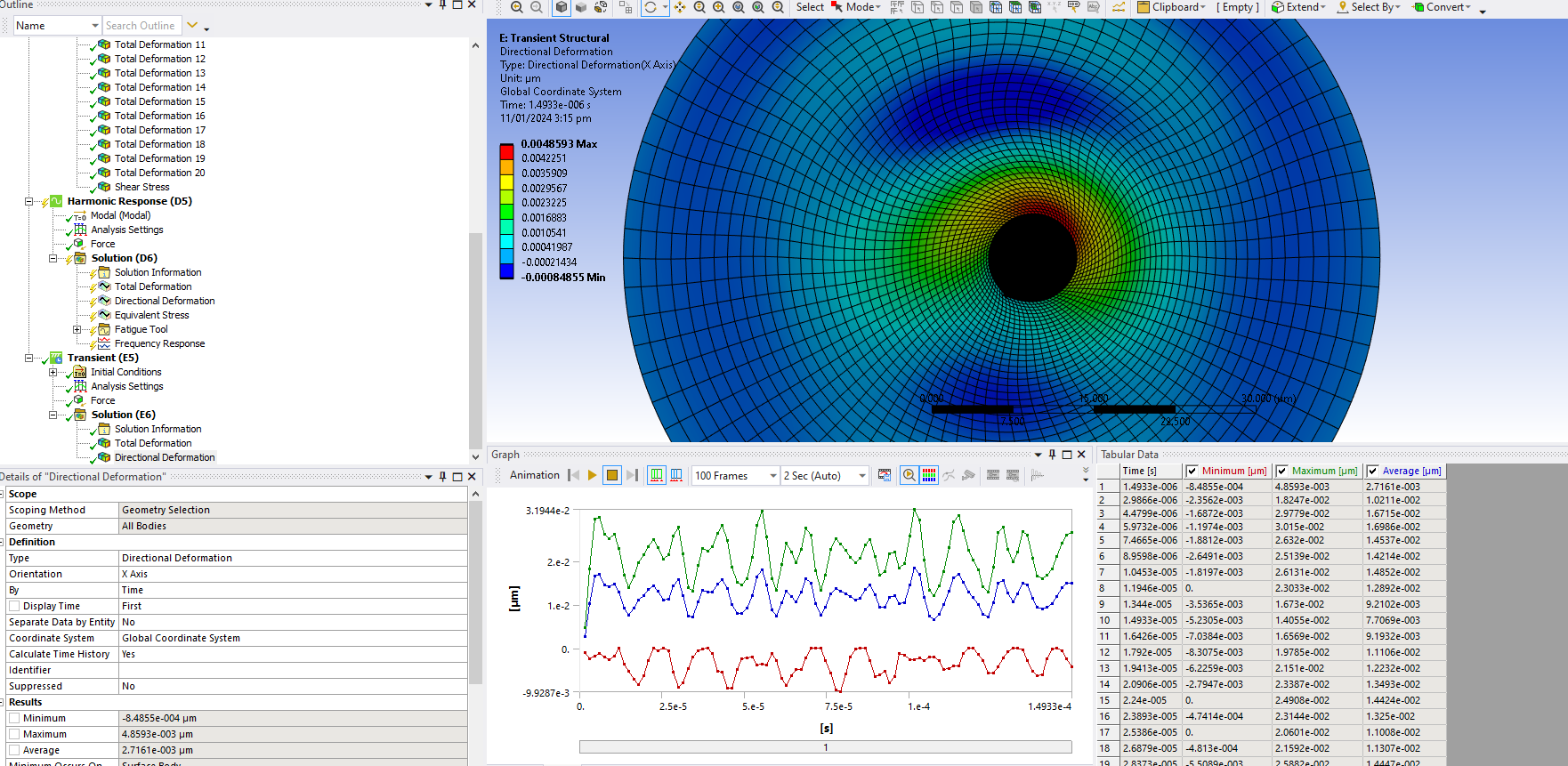-
-
January 9, 2024 at 10:07 pm
Hassan.liaquat
SubscriberI performed a modal analysis of multiple similar systems using Ansys Modal, after identifying frequencies with the highest participation factor and effective mass-to-mass ratio for each system. However, some systems' fundamental frequencies are near to another system's eigenfrequency.
Now, I want to check the response of each system at the fundamental frequency of system 1, that is, how fast the amplitude of each system increases at the fundamental frequency of system 1. For that, I need each system's amplitude vs time graph, as shown in the sketch below. I am trying transient structural, but I am encountering two issues: how to give force. The force will be an ultrasonic force with a frequency equal to the fundamental frequency of system 1, say 66000 Hz, and an amplitude of 0.8 uN. How do I input this force in transient structural as a function?
What should be the step control for this? I want to observe, let's say, one pulse of ultrasound carrying ten cycles of the wave.
-
January 10, 2024 at 8:01 am
Erik Kostson
Ansys EmployeeHi
You can use tabular loading for the force or function (force vs time) option:
For the tabular loading you can copy paste data from excel into the force tabe in ansys.
/forum/forums/topic/cyclic-loading-from-ansys-workbench/
Function:
https://www.youtube.com/watch?v=AGpE0Ycdvvk (see here when they apply the force as function)
For time step, we use dt=1/(10*fmax) where fmax is here the ultrasonic excitation frequency I suppose (66 kHz).
All the best
Erik
-
January 10, 2024 at 11:36 pm
Hassan.liaquat
SubscriberHi Erik,
I tried to follow the video link you shared (
)I am applying a force at an ultrasonic frequency, so I put force function = 0.08*sin(2*3.14*66964*step end time). I put time equal to the step end time.
When evaluating directional deformation i.e., in the direction of force of excitation, this is what I got. Although it gives some idea of the body fluctuating about mean zero, the amplitude does not seem to increase with time, although it’s the resonant frequency of the body with maximum PF and effective mass ratio among all modes. Geometry is a 2D circular solid (Smaller in the center) inside a fluidic body (Larger outer circle)
-
- The topic ‘Graph for Amplitude growth at resonance’ is closed to new replies.


- LPBF Simulation of dissimilar materials in ANSYS mechanical (Thermal Transient)
- Convergence error in modal analysis
- APDL, memory, solid
- Meaning of the error
- How to model a bimodular material in Mechanical
- Simulate a fan on the end of shaft
- Real Life Example of a non-symmetric eigenvalue problem
- Nonlinear load cases combinations
- How can the results of Pressures and Motions for all elements be obtained?
- Contact stiffness too big

-
4167
-
1487
-
1338
-
1188
-
1021

© 2025 Copyright ANSYS, Inc. All rights reserved.








